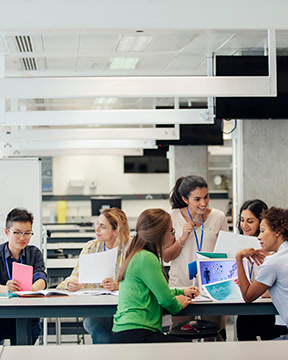Higher Education Has Changed
The evolution of technology has impacted the way people find and apply information in and outside of the classroom. This 3-part video series explores technology's role in the classroom and curriculum.
How Has Technology Impacted Higher Education?
In part one of this three-part series, AVI Systems CTO Brad Sousa talks with Jeff Day, Founder of North of 10 Advisors, to discuss the key ways education and, specifically, pedagogy differs from 10, 5, even 3 years ago.
Discussion Topics
- The impact of active learning and the introduction of the internet of things (IoT) in the classroom
- Recommendations for deploying modern learning environments with technology partners
- Classroom systems design, then and now
In part two of this series, Brad and Jeff talk about the ways universities and other educational institutions have partnered with private businesses and organizations in their communities to achieve common goals.
Sign up for updates on this video series and more education-related content.
Watch Next

ABOUT THE SPEAKERS

Brad Sousa is an industry expert on visual and unified collaboration, digital media and enterprise solutions. He often speaks about technology trends, strategies and best practices at technology-focussed events, including InfoComm, and serves at CTO at AVI Systems.

Jeff Day is the founder of North of 10 Advisors, a Detroit-based a consulting agency, and serves as chairman of the AVIXA Board of Directors. He has worked in key leadership roles at prominent technology companies, including BlueWater Technologies and Cisco.
How to Jump-Start Modern Learning Environments at Universities


Culture is reinforced by staying consistent
An active learning approach fosters a stronger platform for learning, benefiting both students and instructors. Stay with it to create a culture around active learning in the classroom.
Set educational goals first
Identify core learning targets and decide what practices will best assist students in reaching those goals. Examples include creating activities with different purposes like cooperative learning and critical-thinking motivators.
Design a classroom that's fit for modern learning
Consider what technology will work best in the available space. Software solutions can give students tools to participate throughout the class and provide real-time feedback. Hardware solutions can significantly enhance an active learning space.
Provide the right training resources and opportunities for instructors
Give instructors opportunities to discuss and share strategies for implementing ALC strategies. Faculty need time to adopt strategies that work for specific content.



